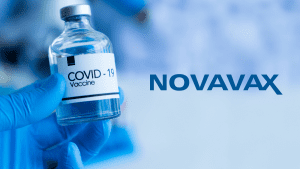
Aerami Therapeutics Plans Mid-Stage Trial for Pulmonary Hypertension Indications
By Alex Keown
April 12, 2023
Aerami Therapeutics will take its lead, inhaled asset AER-901 into Phase II testing for two serious and rare forms of pulmonary hypertension later this year. Company leaders believe their formulation of imatinib will provide improved treatment efficacy for patients.
The Durham-based company will aim the drug-device combination at both pulmonary arterial hypertension (PAH) and pulmonary hypertension associated with interstitial lung disease (PH-ILD). AER-901 is designed to deliver low-dose imatinib to the lung through an inhaled formula. This will reduce systemic exposures relative to oral imatinib, which can cause cramping, bloating and bleeding problems.
During a virtual investor conference held April 11, Chief Executive Officer Lisa Yanez said Aerami has adapted an “an intentional and tight developmental program” in order to bring AER-901 to patients as a new option for these two indications. She noted there is already strong Phase III data for oral imatinib, a tyrosine kinase inhibitor in PAH patients that indicates the efficacy of the drug. However, that data also included some of the noted side effects previously mentioned. The key for Aerami will be delivering the drug without those side effects, Yanez said.
“This is something we all want and we believe in,” said Yanez, who took over the CEO role in December 2022.
Data from a Phase I study assessing Aerami’s asset showed a strong PK profile with limited systemic exposure, Yanez said. Full data from this study will be presented at a future medical conference. The company believes if this data remains consistent throughout clinical testing, it will position AER-901 as a potentially preferred treatment for these two diseases. AER-901 was licensed from Vectura Ltd. A version of the nebulizer is currently in use in Europe as part of another drug-device combination for the treatment of PAH, Aerami disclosed.
Pulmonary Arterial Hypertension (PAH) is a rare and progressive form of pulmonary hypertension characterized by high blood pressure in the arteries of the lungs. This requires the heart to work harder to pump blood through the lungs and typically leads to heart failure and death. There are an estimated 70,000 PAH patients in the United States and Europe. Median survival for this condition is approximately five to seven years.
There are multiple drugs approved for the treatment of PAH, including GSK’s Flolan, a prostacyclin vasodilator and United Therapeutics’ Remodulin (treprostinil). Yanez said Aerami’s leadership team appreciates PAH is a competitive space but they believe AER-901 will serve as an innovative option for these patients.
Pulmonary Hypertension Associated with Interstitial Lung Disease (PH-ILD)is a serious condition characterized by high blood pressure in the arteries of the lungs. There is currently one approved treatment for PH-ILD and estimated survival is less than five years.
The Phase II trial is expected to begin in later this year with topline data available in the second half of 2024. The mid-stage trial is expected to recruit both PAH and PH-ILD patients. They will be evaluated in separate cohorts for 24 weeks.
Gary Burgess, consultant chief medical officer to Aerami said delivering imatinib with a nebulizer has so far been impactful. Data shows this method delivers two to three times more medication directly to the lung, he said. The dosage levels of imatinib are not as high as the previously cited Phase III study where the safety issues were observed, he added.
“We believe that the data from our Phase 1 trial, along with results of our nonclinical studies, strongly support our hypothesis that AER-901 can target delivery of low-dose imatinib to the lung at therapeutic levels while greatly reducing systemic exposures relative to oral imatinib. We believe these data will further differentiate AER-901 from other inhaled tyrosine kinase inhibitors in pulmonary hypertension and will enable us to initiate Phase II development,” Burgess said.







